For a very, very long time, Google Ads Display Planner was a tool in its own right.
In other words, Google Ads Display Planner was an independent tool designed to help businesses expand the reach of Display Ad Campaigns and target relevant users.
But nowadays dec Ads Display Planner is no longer among us.
At least on his own.
Google has built all the basic features of this planner tool into the Google Ads interface.
“Google Ads Display Planner has now been deprecated in favor of estimates presented when creating Google display ad Campaigns”
Now if you want to use this tool, that is, to use Google’s forecasting features, you need to actively create a campaign.
According to Google, this new version has become much easier for advertisers. Now you don’t need to enter this tool first and then the Google Ads interface via Google Ads anymore.
Moreover (which I think is quite important), Google is telling us that as a result of this combination, this tool is much, much better than the previous one.
Advertisers now have more target audience options and formats. Both in the same place.
This means that Google can get to the top of this update by saying that:
“Display ads will now be giving much more accurate results.”
I know this definitely sounds great. Then let’s take a closer look at all these features that support this claim of Google and further increase its predictive power, and let’s give you tips for your Google Display Ads campaigns.
But before jumping into all these points, I would like to make a point. Is Display Ads really as important as it is said to be? Why is Google Display Ads mentioned as the best place for their ads to appear?
- Why Choose Google Display Network?
- What Does Google Ads Display Planner Actually Predict?
- Getting Started with Google Ads Display Planner
- Think about Them When Using Google Ads Display Planner
- Frequently Asked Questions
- as a result
Are Google Display Ads Really Worth It?
With search network ads, you catch people who are actively searching under your keywords, so naturally dec dec chances of conversion are high.
On the other hand, display ads allow your ads to be shown to people who are not actively searching for your keywords. They respond to ads while browsing websites, blogs, apps, or watching videos. They are also not in a hurry specifically to buy it. However, it is important to take into account the PPC traffic temperature when measuring the effectiveness of a direct-response display advertising campaign.
“Depending on which keywords you are targeting and where your audience is on the buying funnel, viewing may only be your conversion trigger point.”
Display ads are ideal for companies that need to quickly announce their names in front of potentially millions of new people.
Although they do not have such a high CPC rate, they come with a reasonably priced CPM pricing model, they are easy to test.
Display Ads (Display Ads) Can Be Viewed as Follows
Display ads come in a wide variety of formats, including text, image, interactive, and video.
Here is a good example of an ad:
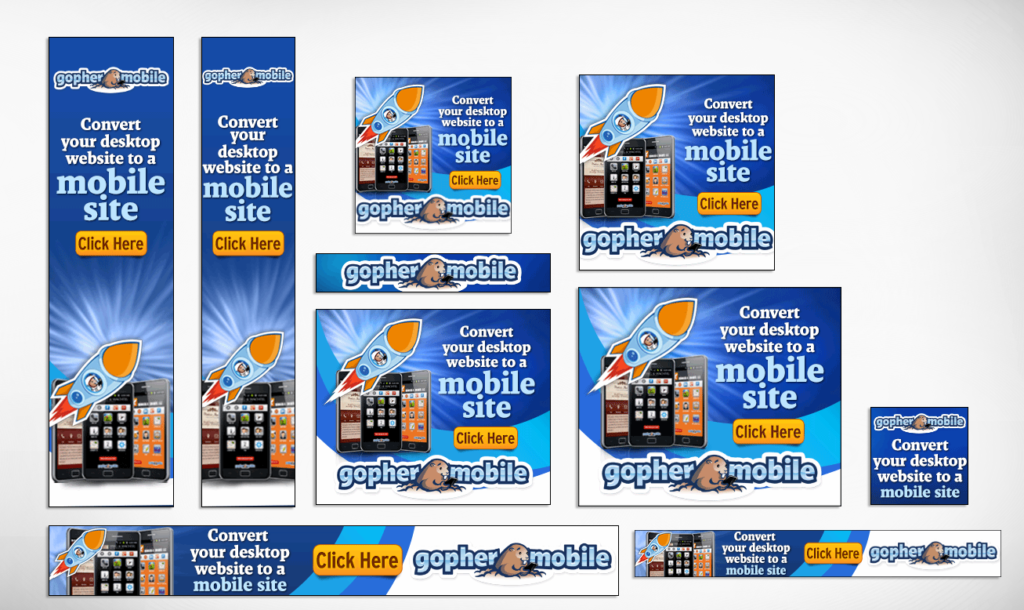
Why Choose Google Display Network?
There are several Display Ad Networks that you can choose to show your ads to. However, it should be noted that for many reasons Google is often the safest option.
For starters, it has the widest reach and allows you to place your ads on Google’s own properties. I’m talking about YouTube, Gmail and more than two million partner websites and applications.
According to Google, these owned sites reach 90% of internet users worldwide.
You can show your ads to people while they are reading their favorite news sites, blogs or apps.
Or you can reconnect with users who have left your website and are browsing elsewhere.
Google gives you some real “in-depth review” targeting options that Facebook likes can’t do. It allows you to identify your ideal audience based on everything from demographics and interests to purpose.
The platform is also miles ahead of the competition when it comes to metrics and tracking performance. You can get measurable clicks, impressions, and conversions directly from your Google Analytics account.
Google Display Ads Are Now “Responsive”
Google has made Display Ads “responsive”.
Now, frankly, what I’m saying doesn’t mean that all display ads are now responsive. However, I’m talking about static, videos. You have the option to select “responsive ads” from the list. And this makes life much easier, especially for SMEs with little time, since you don’t need to test endless formats to fit on different sites.
Using machine learning Google automatically adjusts ads to test different combinations of images, logos, descriptions, and titles, and then displays the best-performing combinations.
So What are the Advantages of Google Display Ads?
Display ads can help you promote your business while users browse online, watch YouTube videos, check Gmail, or use mobile devices and apps.
You can reach more than 90% of global internet users on millions of applications and websites.
This type of access allows you to learn about consumer behavior, identify valuable audiences, and interact with these audiences quickly and often.
Digital marketing is constantly evolving, which helps businesses like you connect with more customers. Google Ads plans its budgets in advance on a monthly basis. It meets the needs of users when they need products or information at the right time of their advertising. You can help him maximize conversions and achieve key performance indicators (TPGS).
By planning Google Ads budgets in advance, you can:
- Understand the future spending potential of existing Google Ads campaigns to help make budget decisions
- Take advantage of seasonality to catch incremental deals
- Identify the most appropriate offers and budgets for their campaigns to help maximize ROI performance
- Find new opportunities to grow sales volumes with Google Ads
We use advanced Performance Planning tools to highlight growth opportunities for your Google Ads campaigns. Having optimal budgets and offers is very important to get the most out of your marketing budget and grow your business with Google Ads.
Cost Effective
There is nothing approaching how cost-effective display advertising is. We can reach thousands of people for a few cents.
Increase Brand Awareness
People can see your ads thousands of times, and you won’t pay for it (i.e., you won’t pay a penny), but the next time they’re ready to buy it, your brand will start to stick in the mind.
Precision Targeting
You can target it by geography, demographics, income, even specific websites and much more.
Visually Appealing
Göz alıcı çekicilikten bahsediyorum. Arama Ağı’ndaki metin reklamların aksine, görüntülü reklamlar sınırsız yaratıcı kontrol sunar. Bir resim bin kelimeye bedeldir ve izleyicinin dikkatini çok daha fazla çekebilirsiniz.
Auxiliary Transformations
In parallel with how cost-effective Display Ads are in terms of access and CPC, they also offer one of the lowest initial costs in advertising. Dec your budget is limited to start using Search Ads, a low budget can go a long way in Display Ads.
Increase Visibility
We are sure that ads will appear on the web quite often, as they can be seen by more than 90% of all Internet users.
Data Mining and Forecasting
In october to real-time analytics and campaign performance, we have a wealth of user data.
The Power of Retargeting
The ability to retarget users who have visited your site, specific pages, or even users who have performed certain desired actions on your site is very important for the return of advertising expenses.
Now that we’ve covered the basics, let’s move on to what this article is really about, namely: Google Ads Display Planner
What Does Google Ads Display Planner Actually Predict?
Google’s newly integrated prediction features help you choose where to display your ads on the Display Network.
This you should do the following:
- You can generate new ideas for ad groups and see real-time forecasts.
- Ideas come with past costs, as well as impressions and access estimates, so you can create effective campaigns.
Your Video Targeting Options with the New Google Ads Experience
How about checking out the updated targeting options in the new Google Ads Display Planner?
- The new Google Ads experience allows you to target words, phrases, or URLs
- Add audiences, topics, placements and keywords to october ads appear in the ‘context’ of specific content or on specific websites
- Ensure that your ads are seen by people who have visited your site (remarketing) or are likely to be in the sunday for your product
- Reach out to individual users based on their interests or intentions
- Target it with demographic data – age, gender, parenting status, etc. (Ex. Young mothers)
This screenshot provides a useful overview of the different types of audiences you can use for targeting in your campaigns:

Start Using Audience Insights First in Google Ads Display Planner
You can start your first exploration of the Google Ads Display Planner tool by using the Audience Manager to see where you can have display advertising opportunities.
You can find your Audience Manager under the ‘tools’ key in the top navigation menu:

When you click on the Audience Manager, you will see a screen similar to the screenshot below.
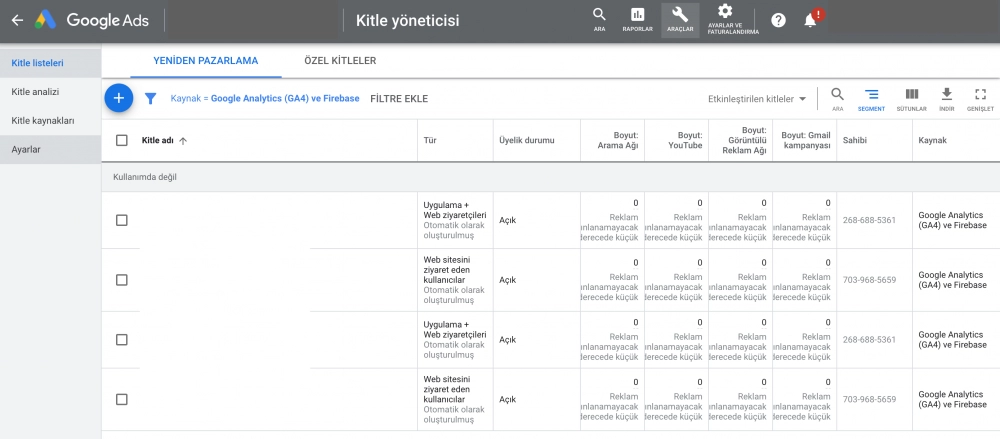
Here you can see which of their ads are performing the best based on demographics, location, and more. This can help you decide how to prioritize your display campaign development.
Speaking of prioritizing their plans, looking at their performance estimates is the next great step.
Get Performance Estimates
During the campaign creation process, when developing ideas, you can access performance estimates to determine how the campaign will perform.
We will begin to understand how this works in practice by showing you how to start Google Ads Display Planner. I will introduce you to some targeting options and related predictions.
Getting Started With Google Ads Display Planner
If you click on the tools to access the planner until recently, you can find it very conveniently under Planning.
Now you can see that the old Google Ads Display Planner has disappeared.

Nowadays, to access the forecasts, you need to create a new blank campaign.

To create a campaign;
Click the Blue + sign to start, then click “New campaign” from the drop-down menu that appears:
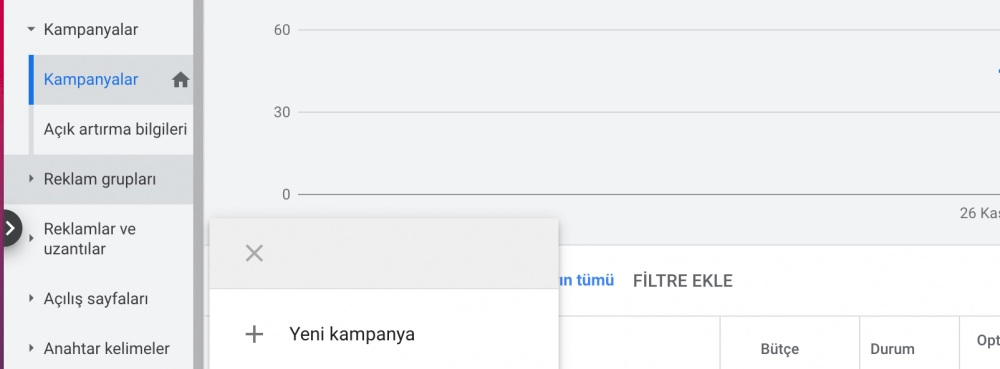
Okay, it’s been easy so far, hasn’t it?
Now let’s choose the target that suits you. For example, if increasing sales is a priority (and when is not?), choose this as your goal.
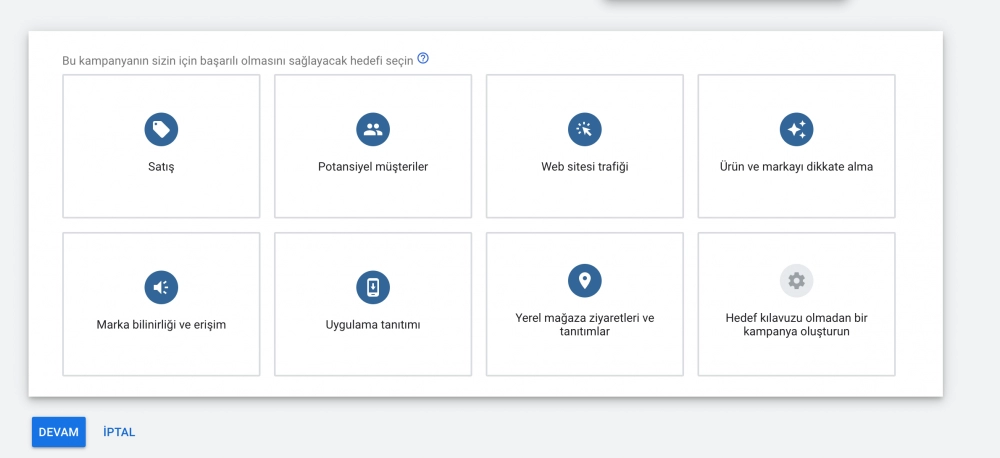
Next, we need to select the “Display Network”, thanks to which we will create a Display Ad.
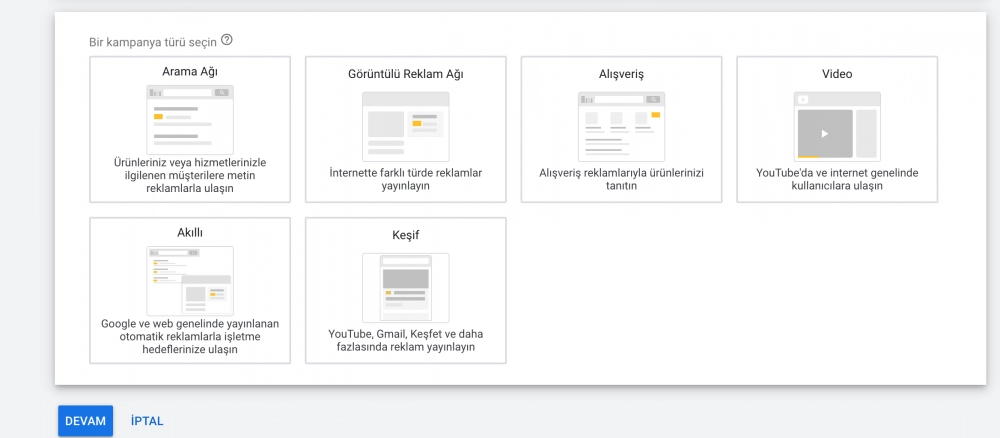
You will be prompted to enter a sub-type for your campaign. For the purposes of this step-by-step guide, we will select the “Standard display campaign”.

After selecting this option,the application will ask you how you want to achieve your goal.
If your goal is to increase sales by converting more traffic to your website, we need to enter the URL of the website here.
Similarly, you can create a special landing page for users to reach after clicking on your ad. Then you can list this URL here.
Advertising Places
In the application, select the place where you want your ad to be served. You will see the estimated access on the right side of the page as a representation for your selected location. You can also enter a place to exclude.
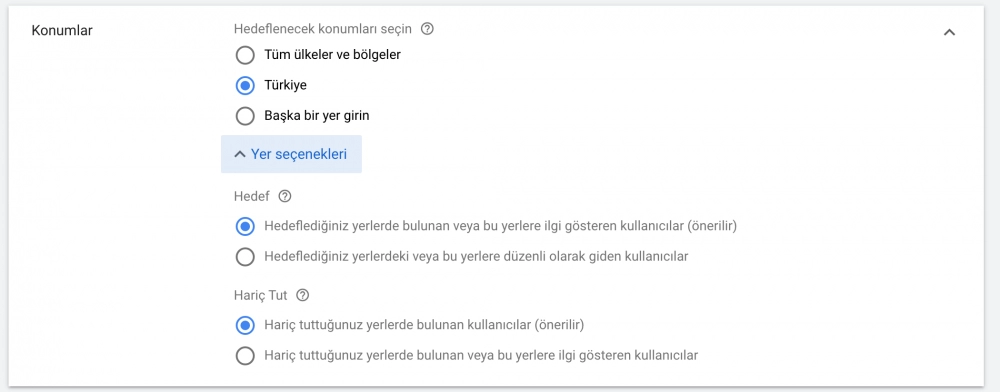
Language and Offer Preferences
It’s time to adjust the language and bidding preferences. For example, if you want to focus on conversions based on your campaign goal and pay on a CPC basis, set them as your preferences.
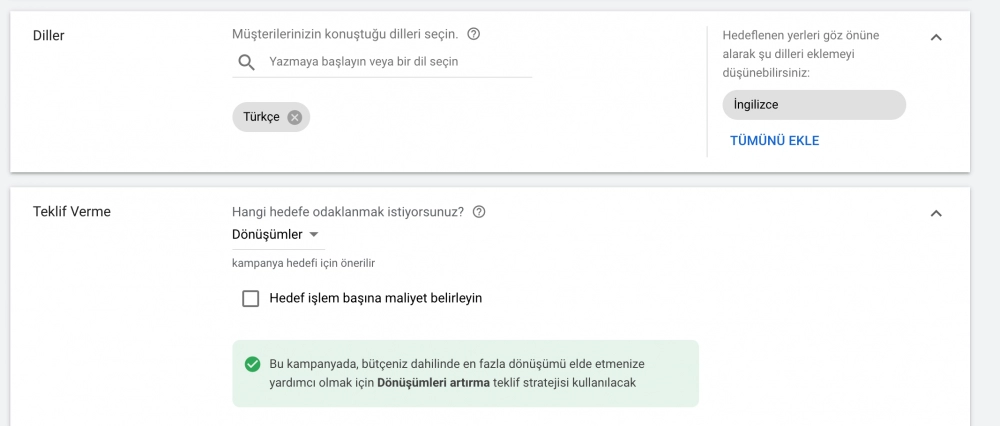
Budget
Then set your budget. Now on the right you will see weekly clicks estimates along with an average CPC rate based on it. You can also see what your access is based on. So far, it is your chosen place and language.

Is that OK? After that, it’s time to decide who you want your ads to reach (target) to:
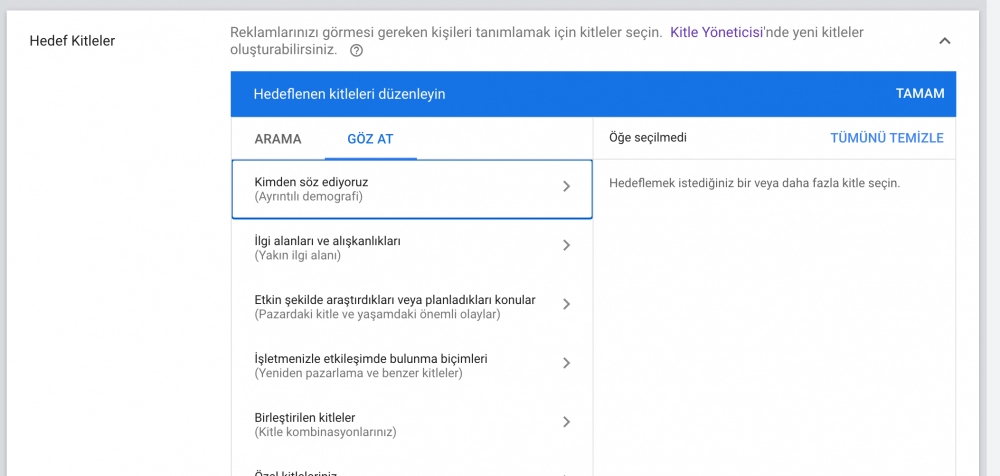
1) Using the Masses
There are many ways to do this.
Then how about we take a look at an example?
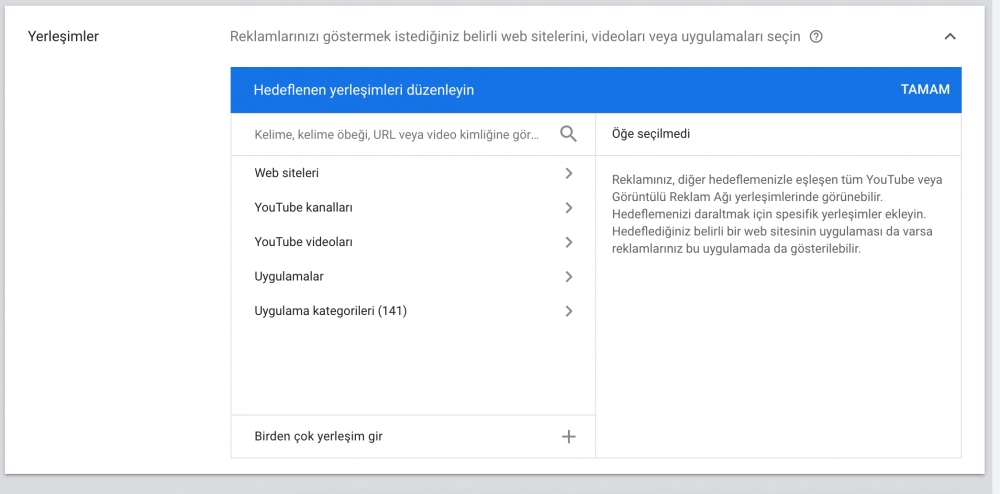
Click ‘Search’ and enter keywords or URLs for ideas. For example, if I enter the keyword ’Business Services’, it brings me two types of audience. Those who are actively engaged in research (Masses in the market) and those who have interests and habits related to this keyword (Masses of close interest).
This is a brief introduction to using Google Ads Display Planner for ”audiences”.
When creating a real campaign, be sure to take the time to try out all the various options and see their impact on access and CPC estimates.
For example, using remarketing can really increase your conversion rates.
For now, though, let’s see why.
2) Content Targeting
Click on Content Targeting:

Select ‘Keywords’, then type your website or product or service. You’ll get keyword ideas, including access and CPC estimates, as well as the ones that are most relevant to your business.

✔ If you want to show your ads to people who are interested in your keywords, you can use the ‘Audience Setting’.
They will most likely be more qualified to use content related to your keywords, which may mean that they are browsing websites related to your domain, but they may not be interested in your special offer.
if you select audiences, you target those people who are interested in your keywords that may be browsing unrelated websites.
3) Targeting ‘Topics’ For Predictions
Simply enter a keyword, for example ‘graphic design’ and you will see a list of broad topics related to your field:
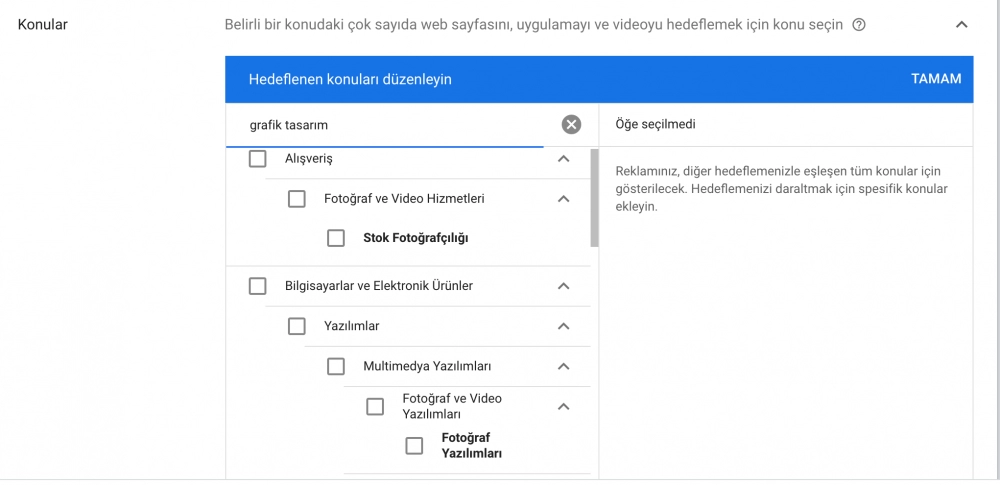
📜Topics are similar to targeting ”broadmapped” keywords on the Search Dec. You’re leaving everything open to interpretation. For example, if you choose ‘desktop publishing’ in our example above, it can occur anywhere on the internet. And it may not be directly related to the people you are trying to target.
Given this, topics may not be something you’ll find so useful.
4) What are the ”Placements” and the Screen Prediction?
Placements used to be the backbone of Google Ads Display Planner and are considered very useful for finding relevant places to run ads such as websites, apps and YouTube channels.

We recently found out that:
“Best placements/recommended managed placements are no longer available in the new Google Ads experience, as they are not considered a best practice for Display Network campaigns.”
It doesn’t matter if you find it useful or not. A display ad estimate can still bring valuable access and CPC estimates, depending on the placements you enter.
Enter your URL and you will find different websites, YouTube channels, YouTube videos applications and application categories where you can advertise.

Click on the ‘websites’ that are most interesting for relevant suggestions and forecasts, and then click on a website that you think may be the most relevant to see the access you can get to that site:
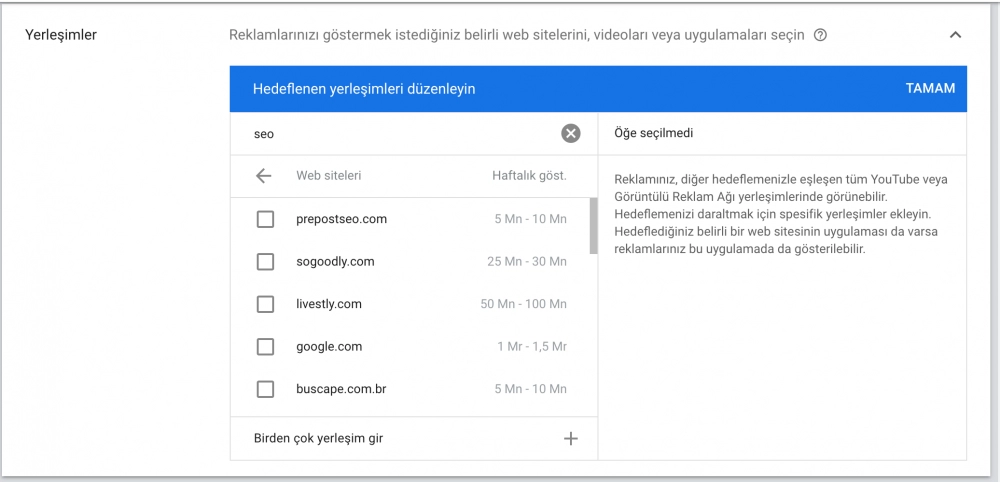
Similarly, you can choose YouTube channels that have potential. Placing their ads on YouTube can be an effective way to advertise, because people tend to be highly interested in what they are watching. They don’t tend to come to YouTube videos by accident.
You can also select specific videos in which your ads will be displayed, and they can be quite relevant:
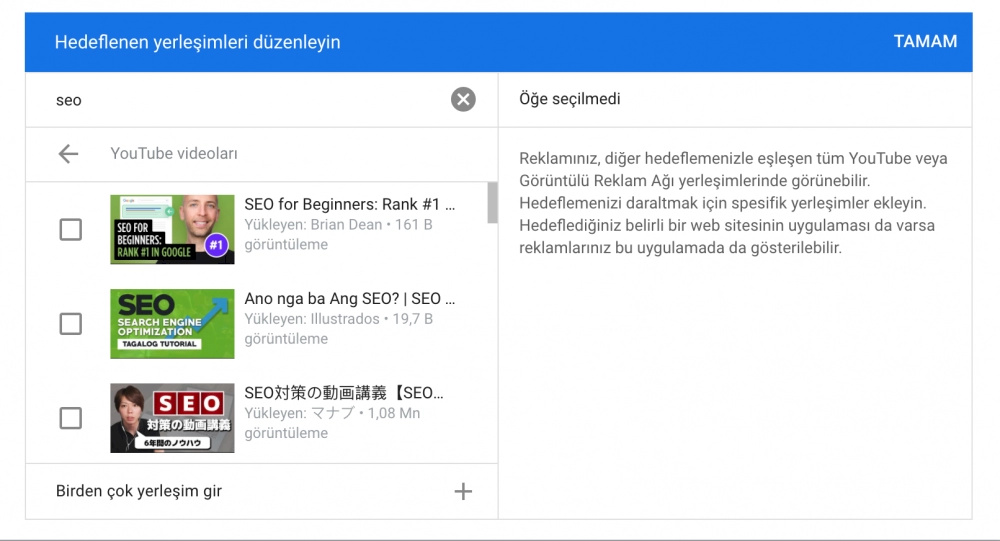
Then you can go back and select applications and application categories and add them to the list of selected placements.
5) New ‘Targeting Extension’ Tool
In the previous version of Google Ads Display Planner, the following screen gave you the option to use “no auto-targeting”, “conservative targeting”, or “aggressive targeting”. This has been replaced with the ‘Targeting Extension’ tool, which allows you to be more detailed in the targeting approach.
If you swipe the slider to the right, you can reach more people who are similar to the people you are already targeting through the target audiences and keywords.
If you swipe the slider to the left, you will limit the targeting to the people you are targeting through keywords and audiences.

The further to the right you move the slider, the more aggressive your aiming approach will be.
We hope that you have a better idea of how forecasts can help you plan Display Ad Campaigns. But before we go, we also collected a few tips that may be useful.
Think about These Things When Using Google Ads Display Planner
We have just gained the surface of the Google Ads Display Planner capabilities. Play around with various targeting options to maximize Google predictions. You will inevitably receive extremely relevant ideas.
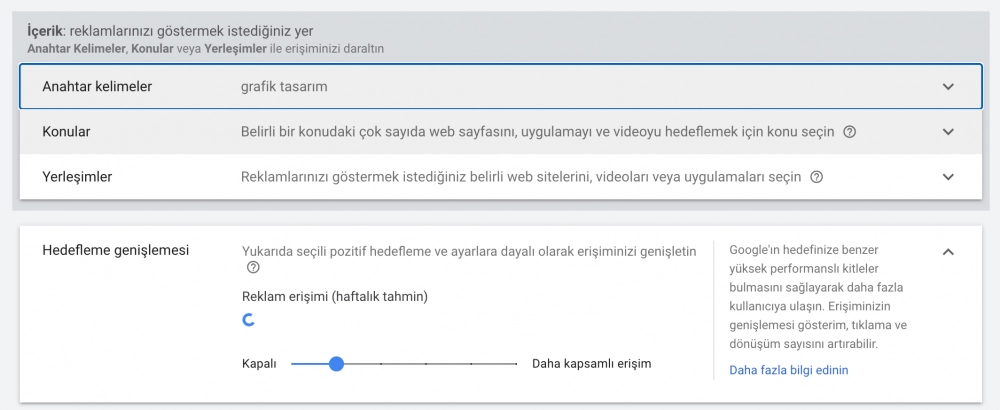
If you’re just starting out, keep your budget small. Especially if you notice that you have a small access at first.
Find the most appropriate conversion levels by adding keywords, audiences, demographics, and then narrow down the demographic as you add extra audiences.
⭐ How to Use a Display Planner to Strengthen Display Network Campaigns?
- Log in to your Adwords account and find the Google image planner under the tools, analysis menu.
- Now that you have found the image planner: Talk about the client’s interests and loved ones using words or phrases or keywords separated by commas and dots.
- Tell Google about it from the landing page URL to find relevant targeting suggestions. If you prefer to run both of the above targeting settings, you should also know that you may decide to add one of the keywords or mention your landing page.
- Select the country and language you want to target and click Get an idea. After your request is determined, you will get a large number of keywords, placements, interests and topics to target.
What Can You Do To Create Advertising Strategies Tailored For Your Results?
- Create new ad groups based on your preferences of tools and suggestions. You can also customize the results to fit your campaign strategy.
- Filter your results by text ads, square and rectangle images, vertical images and large clipboard images.
- Filter your results by mobile and video ads.
- Select only the ad fields at the top of the screen.Filter the operating system using application placements.
- Filter the operating system using application placements.
- Find out more about the gender and age of the current weekly inventory for dec search results.
- October the results directly to your account. This will be put on hold for you to work on and create new advertising strategies.
- By going to one or more of the ”individual targeting ideas“ or ”ad group ideas“, you can get a planned ad group in the ”your plan” tool in the right sidebar.
- Then you can study the plan and get approximate impressions of visitors and your costs. You can constantly change the settings until they best fit your campaign goals, then download the action plan or add it directly to your advertising campaign.
Troubleshooting Audience Access Issues
When you add content targeting, you open up your reach to a wider audience. Oppose this by making sure to add placements.
On the contrary, when you add a large number of audiences and demographics, you can narrow your reach too much. Check out their predictions to make sure you have enough impressions to make their campaign worthwhile.
If your access seems too low, look at how it is defined. In this example, the access is really low (less than 1K). On the right side you can see what defines access.
In this example, it is likely that the settlements are holding low. I have only selected a few placements, so I can go back and add a lot more to expand my targeting reach.
Also, don’t just refer to their landing pages for ideas. To provide Display Planner with enough data to analyze, different URLs (e.g. Wikipedia pages or competitor pages) or other information-rich resources october
With the targeting expansion, you will reach people you wouldn’t otherwise reach. This can provide october transformations that you would not otherwise get.
But aggressive automation is really for people who are not very valuable in terms of where their ads will appear. It is also more suitable for advertisers with a large budget. If you don’t have a very big budget, stick to the middle value or the target you set yourself by sliding the slider to the left.
Finally, set up conversion tracking! If not, you don’t know what works and what doesn’t!

Frequently Asked Questions (FAQ)
What is Google Ads Display Planner?
It is a tool for generating unique ideas for targeting the display advertising network. It is a form to reach target-based customers/customers through their interests by landing directly on the page. The mobile application categories include placements such as videos and websites, interests and sunday segments, topics of close interest, demography and topics related to remarketing.
What are the advantages of Google Ads Display Planner?
Google Ads Display Planner works as an idea generator to help you get started. Secondly, it is a tool to help you create target marketing methods, such as placements, campaigns, sunday audiences.
It provides a bird’s-eye view of how their ideas might have performed relative to past results. In addition, these past costs will guide your marketing decisions The current total inventory and past costs will help you with ideas within your budget and determine offers for new ideas that you have adopted.
The main focus on performance forecasts can be done using Google display planner, as it helps you to see how the offer and budget affect the performance forecasts of your business.
Potential performance can be changed/adjusted and filtered using detailed graphs of the campaign
It has a one-click download option that makes it easy to share or transfer plans with your colleagues or customers thanks to its easy access.
How does Google Ads Display Planner work?
Google Ads Display Planner works as a guide to get started with only basic details about the likes and interests of its customers. The image planner then generates targeting ideas as well as data such as inventory, past costs, performance estimates for your plan.
as a result
Although you can no longer use Google Ads Display Planner for free, the new forecasts you can access provide first-class sunday research.
The new Google Ads experience gives you in-depth, intuitive predictions based on campaign goals. Be sure to use early estimates to generate ideas.
When you’re more confident about your targeting options, run a campaign based on your predictions for a week to a month. Then analyze your results and use them as a basis for your future campaigns.
Good luck with Google Ads Display Campaign Planner! Don’t forget to let us know your experiences with the new interface in the comments below.
You can become a member of our site to grow your Instagram accounts and increase your followers, likes, views and subscribers. Click to see our social media products.

